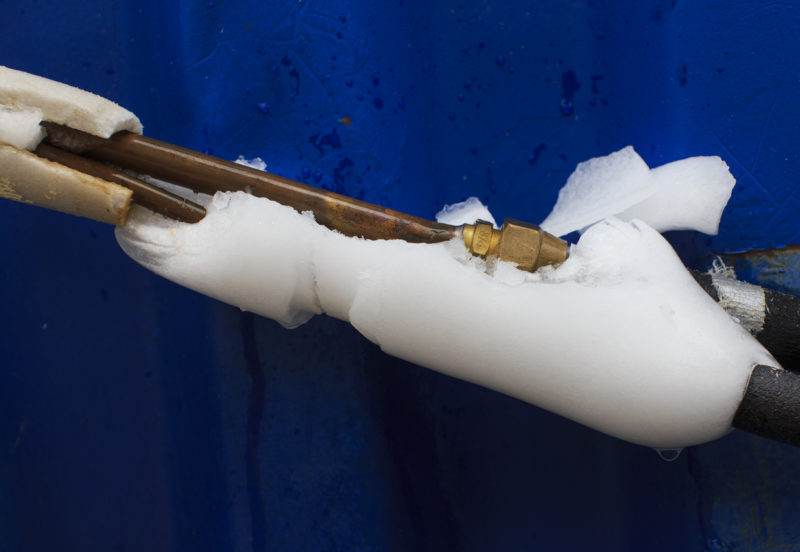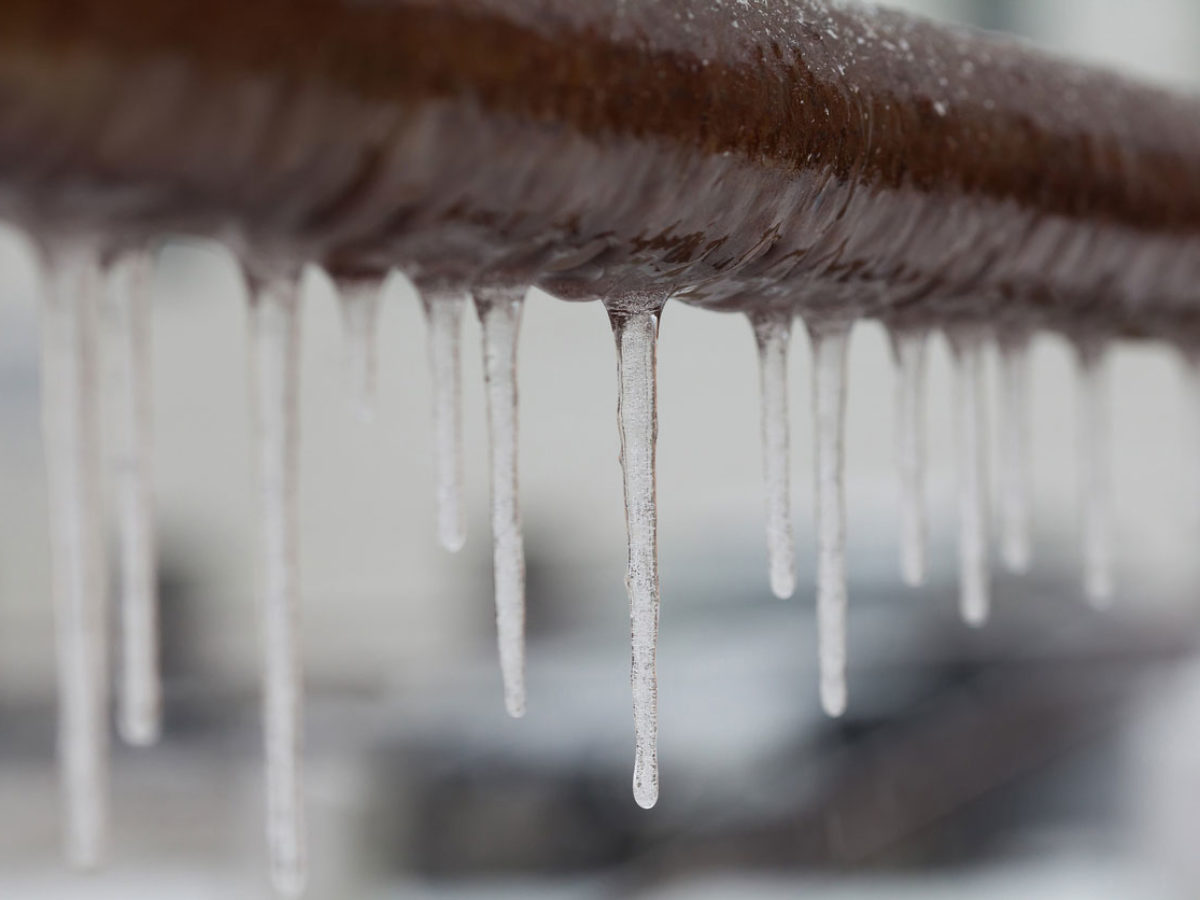My AC Pipe Is Frozen - What Do I Do? Instructions for Residents
My AC Pipe Is Frozen - What Do I Do? Instructions for Residents
Blog Article
They are making several great pointers about What Causes AC Pipes To Freeze? as a whole in this great article in the next paragraphs.

Intro
Uncovering that your AC pipe is frozen can be concerning, specifically during hot summer season when you rely upon your ac unit one of the most. Understanding what to do in such a situation is crucial to avoid additional damages to your air conditioning system and ensure your convenience indoors.
Recognizing the Causes
Several aspects can contribute to the cold of an AC pipeline. Recognizing these reasons can assist you deal with the concern successfully.
Absence of Airflow
One usual root cause of an icy a/c pipe is inadequate air flow. When the air flow over the evaporator coil is restricted, it can cause the coil to drop below freezing temperature, resulting in ice development on the pipe.
Low Refrigerant Levels
Not enough refrigerant degrees in your air conditioning system can likewise result in an icy pipeline. Reduced refrigerant degrees can trigger the pressure in the system to drop, leading to the freezing of moisture on the evaporator coil.
Winter Conditions
In chillier environments, freezing temperatures outside can contribute to the cold of a/c pipelines. If your air conditioner unit is not effectively protected or if there are leakages in the ductwork, chilly air can penetrate the system, causing the pipeline to ice up.
Dirty Air Filters
Unclean or stopped up air filters can limit airflow in your a/c system, leading to numerous problems, including an icy pipeline. It's essential to replace or clean your air filters regularly to make certain correct airflow and stop ice accumulation.
Indicators of a Frozen Air Conditioning Pipe
Acknowledging the indicators of a frozen a/c pipe is critical for prompt action.
Decreased Airflow
If you observe a significant reduction in air movement from your vents, it might suggest an icy pipeline.
Ice Buildup on the Pipe
Noticeable ice build-up on the cooling agent line or the evaporator coil is a clear indication of an icy AC pipe.
Strange Sounds from the Unit
Uncommon sounds, such as hissing or bubbling, coming from your air conditioning unit can signal that there's ice present on the pipe.
Immediate Actions to Take
When faced with a frozen air conditioning pipeline, it's vital to act quickly to prevent additional damage to your cooling system.
Turning off the a/c
The first step is to shut off your a/c unit to stop the system from running and aggravating the concern.
Checking for Blockages
Examine the area around the indoor unit for any kind of obstructions that may be blocking airflow, such as furnishings or drapes.
Thawing the Pipe
You can make use of mild methods like positioning towels soaked in cozy water around the icy pipe to help thaw it slowly.
Safety nets
Taking safety nets can assist avoid future occurrences of an icy air conditioner pipe.
Regular Maintenance Checks
Set up routine maintenance contact a specialist HVAC professional to make sure that your a/c system is running effectively.
Transforming Air Filters
Routinely replace or clean your air filters to prevent airflow constraints and preserve ideal performance.
Shielding Exposed Pipes
If your air conditioner pipelines are subjected to chilly temperatures, take into consideration insulating them to stop cold throughout winter months.
Seeking Professional Help
If DIY approaches fall short to resolve the issue or if you're unsure about how to proceed, it's finest to look for aid from a certified HVAC professional.
When DIY Methods Fail
If your efforts to thaw the pipe or address various other issues are not successful, it's time to contact a specialist.
Relevance of Hiring a Professional HVAC Technician
A certified HVAC service technician has the competence and devices needed to detect and repair problems with your air conditioner system securely and properly.
Conclusion
Taking care of an icy a/c pipeline can be an aggravating experience, however understanding just how to respond can help lessen damages and bring back comfort to your home. By recognizing the causes, acknowledging the signs, and taking prompt activity, you can effectively resolve the issue and stop future events.
What to Do If Your AC Line Is Frozen
Make Sure All Supply and Return Air Vents Are Open
If you notice problems with airflow, the first thing you should do is check your supply and return vents. Supply vents distribute clean, conditioned air throughout your home. As this air becomes stale, it’s pulled into the return vent, where it’s reconditioned before being sent back out through the supply vent.
When these vents are closed, air won’t flow in the home. Before examining your AC, check the vents in every room and ensure they’re all open.
Check for a Dirty Air Filter
Another possible cause of limited airflow is a dirty air filter. Your air conditioner’s filters catch elements you don’t want to breathe in, such as dirt and dust. Over time, filters can become clogged, ultimately blocking air from flowing in and out. The lack of airflow can then cause the entire coil to freeze and will completely restrict any air from moving through it. The AC may need to be powered off for one to two days to allow the coil to thaw after replacing the filter to allow proper functioning of the unit. This debris can also accumulate on your AC’s evaporator coil, requiring a more serious repair. In general, air filters should be cleaned regularly (about every two weeks).
Assess Your Outdoor Unit
In addition to checking your AC, assessing the outdoor unit is a good idea. Also known as the condensing unit, it works with your interior unit to release heat outside. An issue with the outdoor unit can result in rising internal temperatures.
Overgrown Shrubs or Clogged Leaves
From leaves and twigs to shrubs and debris, there’s no shortage of outdoor elements that can accumulate around your condensing unit. When these elements get lodged inside the unit, they can block airflow. Fortunately, removing the blockage can solve the problem.
Sounds of a Broken Fan
Shrubs and leaves aren’t the only things that can impede your outdoor unit’s airflow. If the fan is broken, the unit won’t be able to properly get rid of heat — which means the internal temperature won’t go down. First, make sure the fan is spinning. If it is, check for the following sounds of a broken fan:
Buzzing Rattling Screeching Hissing Clicking Preventative Measures
Nobody wants to deal with a frozen AC line. In addition to causing problems with your air conditioner, they require professional repairs. On the bright side, there are preventative measures you can take to help ensure this issue doesn’t arise in the first place.
https://www.coopergreenteam.com/blog/what-to-do-if-ac-line-frozen

I have been very taken with What Do I Do If My AC Pipe Is Frozen and I am assuming you appreciated the new article. Sharing is good. Helping people is fun. Bless you for your time. Please pay a visit to our site back soon.
Click Here To Find Out More Report this page